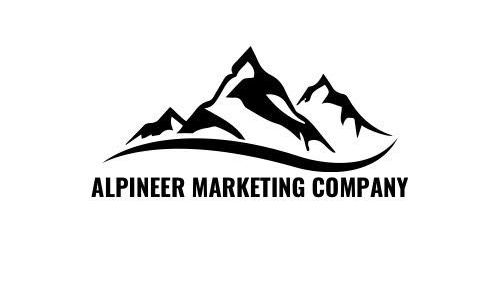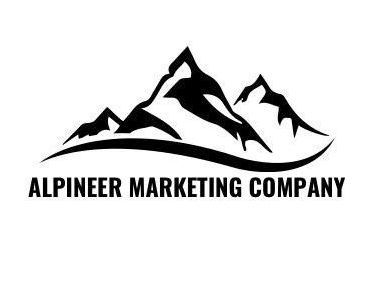Marketing for Arts & Culture Non-profits
Drawing in Audiences and Supporters in the Digital Age
Arts and culture non-profits enrich our communities, inspire creativity, and preserve invaluable heritage. Museums, theaters, galleries, historical societies – you bring beauty, history, and new perspectives to the world. However, attracting audiences, engaging members, securing funding, and standing out in a crowded entertainment and philanthropic landscape requires increasingly sophisticated marketing efforts.
In the digital age, your online presence is your virtual stage, gallery, and historical archive. Mastering digital marketing is essential for connecting with art lovers, history enthusiasts, potential donors, and volunteers, ensuring your cultural contributions thrive.
The Unique Canvas of Arts & Culture Non-Profit Marketing
Arts and culture non-profits have distinct marketing goals and audiences
- Audiences/Visitors: Individuals interested in attending performances, visiting exhibitions, or exploring historical sites. Marketing needs to highlight events, showcase collections, convey the emotional value of experiences, and facilitate ticket sales or visit planning.
- Members/Subscribers: Individuals who provide ongoing support and engagement. Marketing should emphasize exclusive benefits, build loyalty, and encourage renewals.
- Donors/Patrons: Individuals, foundations, and corporations providing financial support. Marketing needs to convey the cultural impact of their contributions, build prestige, demonstrate responsible stewardship, and make donating easy.
- Artists/Performers/Historians: Those whose work you showcase or employ. While not direct marketing targets in the same way, your marketing reflects their value and attracts future talent/content.
- Volunteers: Individuals who support operations, events, or programs. Marketing needs to appeal to their passion for the arts/culture and outline engaging opportunities.
Common Marketing Goals for Arts and Culture Non-Profits Include
- Increasing ticket sales and attendance for events and exhibitions.
- Growing membership and subscription bases.
- Acquiring one-time and recurring donors/patrons.
- Building brand awareness and recognition for the institution or group.
- Promoting educational programs and community outreach.
- Attracting volunteers.
- Highlighting the cultural value and impact of your work.
Challenges often include limited marketing budgets compared to commercial entertainment, the need to market diverse programming simultaneously, reaching niche audiences, and demonstrating intangible cultural value in measurable ways.
Key Marketing Strategies to Fill Seats and Galleries for Non-Profits
Effective marketing for arts and culture requires creativity, clear communication, and a strong focus on audience engagement and the unique experience you offer.
1. Visually Rich Website Development and Management:
Your website must be as engaging and beautiful as the art or history you present. High-quality visuals and a seamless user experience are non-negotiable.
What it involves: Designing an aesthetically pleasing and easy-to-navigate site. Highlighting upcoming events, exhibitions, or collections with stunning imagery and multimedia. Integrating online ticketing or booking systems. Dedicated sections for membership, donations, and volunteer sign-ups. Mobile-friendly design is essential for visitors planning on the go.
Why it's crucial: Serves as the central hub for all information. Creates a strong first impression. Facilitates key conversion actions like buying tickets or donating.
2. Compelling Content Creation and Copywriting:
Content should tell the story behind the art, the history, and the impact of your organization, inspiring interest and conveying value.
What it involves: Writing engaging descriptions of events, exhibitions, and collections. Developing blog posts or articles exploring related topics, artist spotlights, or historical context. Creating video tours or behind-the-scenes glimpses. Crafting persuasive copy for fundraising appeals and membership drives. Developing email and social media content that sparks interest and encourages visits or support.
Why it's crucial: Educates and excites potential visitors and supporters. Builds deeper connection with your audience. Provides shareable content to increase reach.
3. Engaging Social Media Management:
Social media is a powerful platform for showcasing visuals, announcing events, and interacting with audiences in real-time.
What it involves: Utilizing visually-driven platforms like Instagram, Facebook, and potentially TikTok to share stunning images, videos, and behind-the-scenes content. Running targeted ad campaigns to promote specific events or exhibitions to relevant demographics (based on interests, location, age). Engaging with followers, responding to comments, and building an online community of enthusiasts. Using platforms to share news and updates.
Why it's crucial: Excellent for visual storytelling and generating buzz. Allows for direct interaction and building relationships with your audience. Effective for targeted promotion of events and programs.
4. Targeted PPC (Pay-Per-Click) Advertising:
Paid search and social ads can drive immediate traffic for specific goals, like ticket sales or donations, by reaching people with high intent.
What it involves: Bidding on keywords related to your events, exhibitions, or type of institution (e.g., "[Museum Name] tickets," "theater performances [Your City]," "art gallery events"). Running targeted ads on social media to promote specific shows or fundraising campaigns to relevant local or interest-based audiences.
Why it's crucial: Drives immediate traffic for time-sensitive events or campaigns. Highly effective for reaching people actively searching for entertainment or cultural experiences.
5. Email Marketing:
Email is a key channel for communicating with your existing audience – members, past attendees, and subscribers – nurturing loyalty and driving repeat engagement and donations.
What it involves: Building segmented email lists (members, past attendees, donors, general subscribers). Sending regular newsletters with upcoming events, exhibition highlights, and organizational news. Targeted campaigns for membership renewals, special donation appeals, or last-minute ticket pushes.
Why it's crucial: High ROI channel for engaging and retaining existing supporters. Allows for personalized communication.
6. Data-Driven Strategy and Advanced Reporting:
Understanding who is engaging with your marketing, where audiences come from, and which campaigns drive ticket sales or donations is vital for optimizing efforts and demonstrating impact.
What it involves: Tracking website traffic, ticket sales conversions, donation conversions, and email engagement. Analyzing data from social media campaigns. Using insights to refine ad targeting, content topics, and email messaging. Understanding audience demographics and behavior.
Why it's crucial: Ensures marketing budget is spent effectively. Allows you to prove the impact of marketing on attendance, membership, and fundraising to your board and funders.
The Google Ad Grant: A Free Ticket to Wider Reach
This is where the Google Ad Grant offers an extraordinary opportunity for eligible arts and culture non-profits
With up to $120,000 per year in free Google Search advertising, you have a significant budget to increase your visibility and connect with people actively searching for cultural experiences or ways to support the arts. Learn More
How Arts & Culture Non-Profits can use the Google Ads Grant
- Target keywords like "[Museum Name] hours," "[Theater Name] tickets," "art exhibitions [Your City]."
- Promote specific upcoming performances, exhibitions, or events to those searching for entertainment.
- Drive traffic to membership pages for people searching for ways to support local arts.
- Raise awareness for educational programs or community outreach initiatives.
- Attract donors searching for arts and culture philanthropy opportunities.
The challenge lies in mastering the intricacies of the Ad Grant to ensure you're effectively using the full $10,000 monthly budget. Optimizing for the 5% CTR, navigating keyword restrictions, and aligning campaigns with Google's policies requires specific expertise.
Curating Your Arts & Culture Non-Profit's Digital Success
At Alpineer Marketing Company, we appreciate the vital role arts and culture non-profits play in our communities. We understand the passion that drives you and the need to share your work with the widest possible audience. Our experienced professionals are experts in navigating the complex digital terrain and are dedicated to helping non-profits like yours thrive.
How We Can Help Your Eligible Arts and Culture Non-Profit Organization
- Guiding you through understanding and applying for the Google Ad Grant.
- Developing and managing high-impact Google Ad Grant campaigns specifically designed to drive attendance, membership, and donations.
- Applying our data-driven strategy to ensure your marketing investments are efficient and deliver consistent, scalable results that directly support your institutional goals.
- Providing expert management across other crucial channels like SEO, social media, website, and email marketing, ensuring an omni channel approach that reaches your audience where it matters most.
- Offering dedicated support with a low client-to-expert ratio, meaning you get personalized attention from seasoned professionals who understand your unique needs.
We believe your focus should be on curating incredible experiences and preserving invaluable heritage. Let us handle the complexities of digital marketing and the Google Ad Grant to help you draw in larger audiences and secure the support you need to flourish.
Ready to Paint a Brighter Future for Your Arts and Culture Non-Profit?
Effective digital marketing is the brushstroke that can bring your arts and culture non-profit to vibrant life in the digital realm. By strategically leveraging channels like SEO, social media, email, and particularly the Google Ad Grant, your organization can significantly increase visibility, attract more visitors and supporters, and ensure your cultural impact continues to grow.

